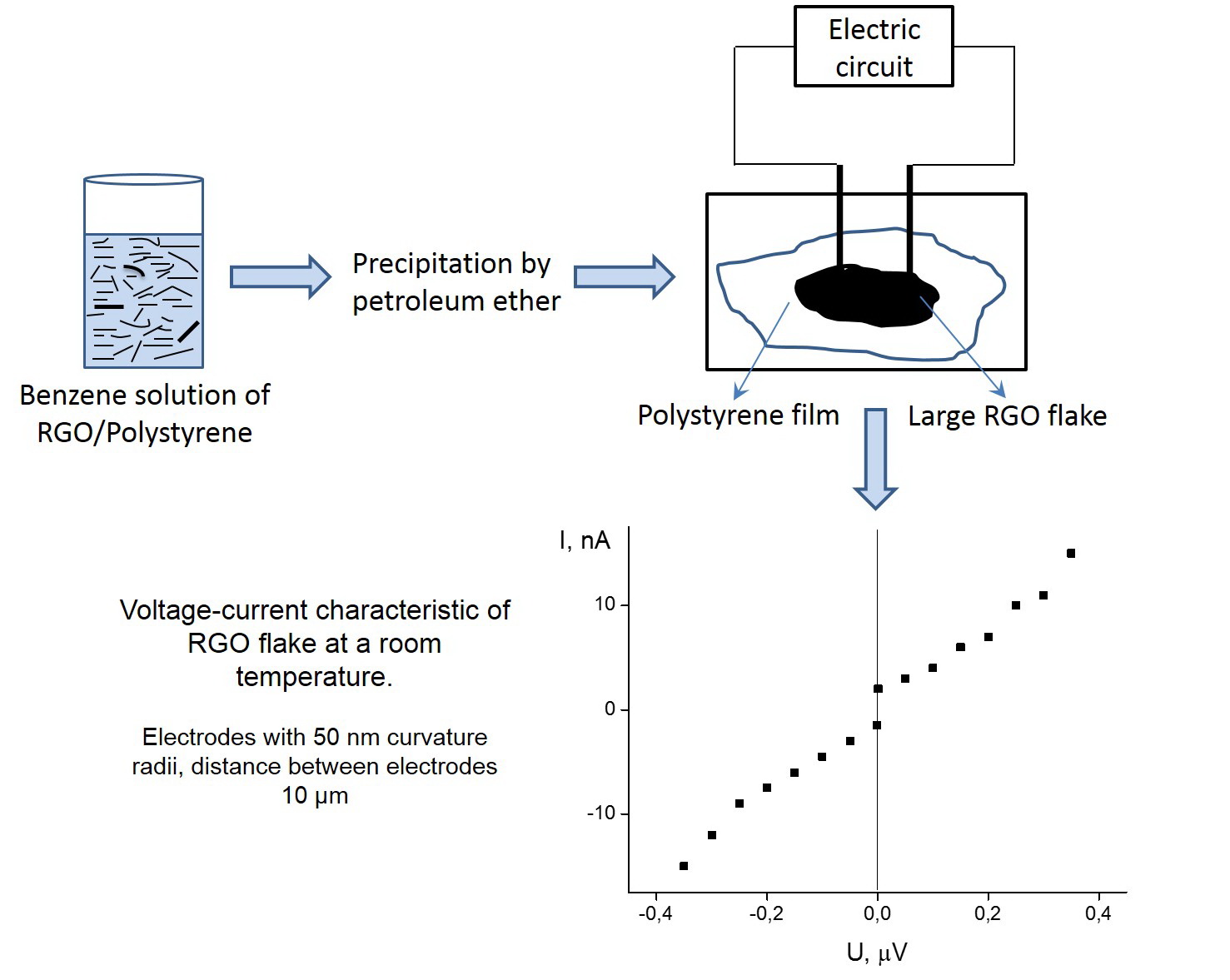NANOSYSTEMS: PHYSICS, CHEMISTRY, MATHEMATICS, 2018, 9 (4), P. 496–499
Resistance of reduced graphene oxide on polystyrene surface
M. N. Nikolaeva – Institute of macromolecular compounds RAS, Bolshoy pr. 31, 199004 St. Petersburg, Russia; marianna_n@mail.ru
A. N. Bugrov – Institute of macromolecular compounds RAS, Bolshoy pr. 31, 199004 St. Petersburg; Saint Petersburg Electrotechnical University “LETI”, ul. Professora Popova 5, 197376 St. Petersburg, Russia; alexander.n.bugrov@gmail.com
T. D. Anan’eva – Institute of macromolecular compounds RAS, Bolshoy pr. 31, 199004 St. Petersburg, Russia; anthracene@hq.macro.ru
E.V. Gushchina – Ioffe Institute, Politekhnicheskaya ul. 26, 194021 St. Petersburg, Russia; katgushch@yandex.ru
M. S. Dunaevskii – Ioffe Institute, Politekhnicheskaya ul. 26, 194021 St. Petersburg, Russia; Mike.Dunaeffsky@mail.ioffe.ru
A. T. Dideikin – Ioffe Institute, Politekhnicheskaya ul. 26, 194021 St. Petersburg, Russia; dideikin@mail.ioffe.ru
Reduced graphene oxide flakes of large area, some of which are more than 100 micrometers in diameter, have been produced on polystyrene surface. These flakes were formed during precipitation of composite based on polystyrene with reduced graphene oxide from the benzene by petroleum ether. Extremely low resistances were obtained for these flakes in planar dimension at room temperature. The measured resistance absolute values turned out to be 2 orders of magnitude lower than the resistance of copper. This result is explained by existence of superconducting component in the reduced graphene oxide inclusions.
Keywords: reduced graphene oxide, polystyrene, composite, resistance.
PACS 36.20.r; 68.65.Pq; 71.20.Rv; 72.80. Tm; 74.78.w
DOI 10.17586/2220-8054-2018-9-4-496-499
